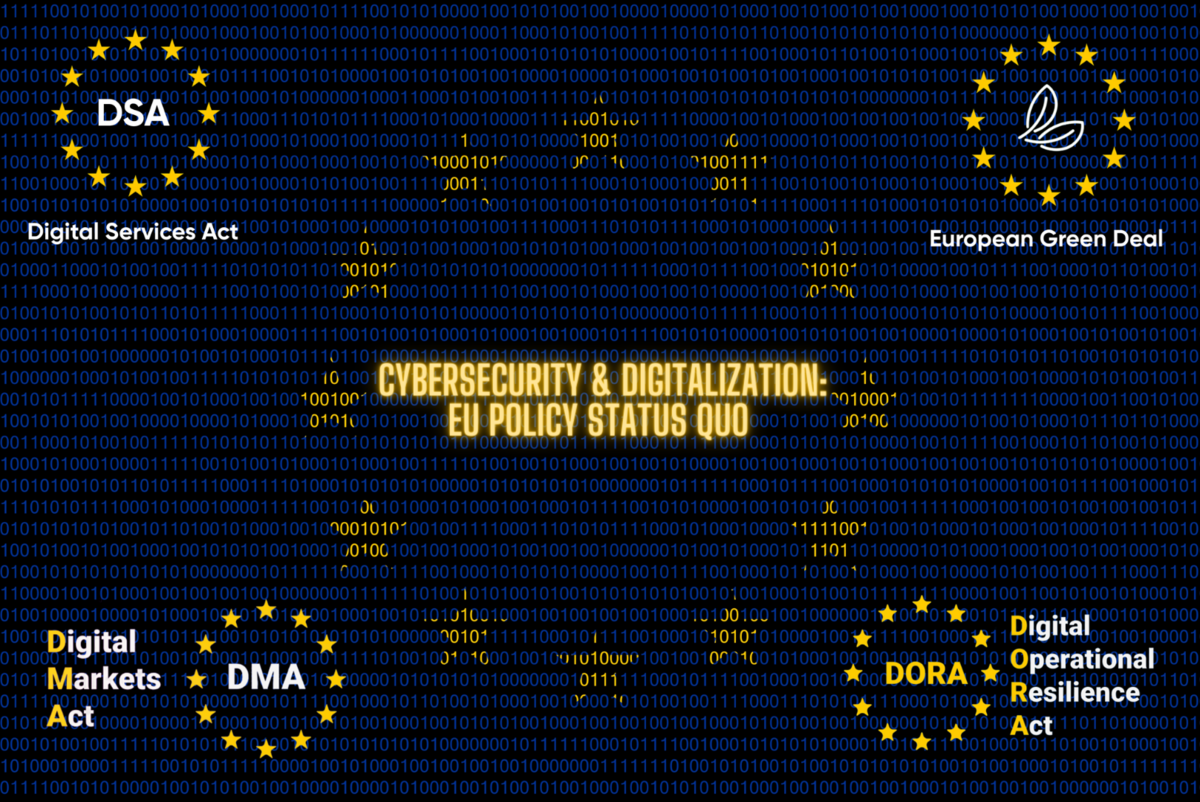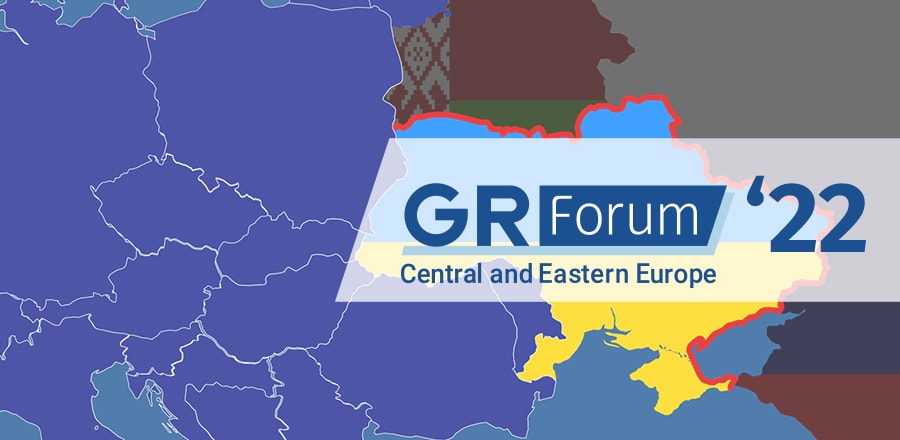CYBERSECURITY AND DIGITALIZATION: EU POLICY STATUS QUO

Cybersecurity and Digital Identity Committee
Margaret Vestager’s Cybersecurity and Digital Identity (CDI) Committee designates the EU agenda on cybersecurity, privacy, and digital identity across the European Economic Area (EEA).
The Committee copes with an array of aspects ranging from identity verification and e-signatures to security evaluation and certification. In focus are both public and private identity matters. With that, the Committee designates the quality of provided services, including licenses and special documents in compliance with the EU and national regulations.
CDI is currently proactive in implementing eIDAS II Proposal initiated by the European Commission to enable trusted digital identities.
EU Initiatives on Cybersecurity and Cyberwarfare
As defined, cyberspace marks the fifth domain of warfare along with air, space, land, and sea. The security of computer systems and digital infrastructure, including information and telecommunication networks, is important to prevent cyber threats. The major problem is that digital innovations come along with new cyber menaces. Given that, cyber defense cooperation across the EU is crucial.
EU’s multiple responses to cyber security challenges and cybercrime prevention entail solid resilience measures. The achievement of cyber defense encompasses critical domains (i.e. energy, transport, finance, and healthcare among others) much dependent on digital technologies.
At the core of the EU Cybersecurity Strategy since December 2020 is the major line of cooperation towards proactive and reactive cyber-defence measures covering joint actions among the EU, the European Defense Agency (EDA), the EU Cybersecurity Agency, and Europol.
Since November 2022, the EU Policy on Cyber Defense has been empowering EU cyber defence capacity and solidifying cooperation between cyber communities and the military.
High on today’s EU cyber defence agenda is the prevention of cyber threats and greater resilience of physical and digital entities. The Digital Europe Framework until 2027 entails €1.6b investment into a wider deployment of cybersecurity infrastructures across the EU. Among other critical domains, the cybersecurity emphasis is on 5G networks. The strategic focus covers 5G resilience to ensure Union’s autonomy and secure digital communication across main public sectors.
EU Digital Solutions For Greener Future
Among possible improvements, the attainment of a greener Europe assumes proper digital solutions.
The case of Europe’s green transition will mostly depend on the success of the European Green Deal initiated by the EU Commission as a core agenda towards climate neutrality by 2050. The pursuit of green transition entails digital transformation and solutions capable of cutting emissions by 20%. With above 75% of greenhouse gas emissions across the EU, the greener future incentives prioritize maximum use of solar and wind potential on household rooftops.
The EU Commission’s Re-Power-EU Plan emphasizes digital maps to best fit solar installations and wind farms that would utilize the highest energy-producing potential. The installations like these will save energy, boost renewable energy sources, and diversify supply.
 Cutting-edge technologies like digital ‘smart’ grids and meters will enhance industrial processes by optimizing solar and wind energy use. Diversification of energy supplies from different sources will help grid operators track energy flows and manage supply channels.
Cutting-edge technologies like digital ‘smart’ grids and meters will enhance industrial processes by optimizing solar and wind energy use. Diversification of energy supplies from different sources will help grid operators track energy flows and manage supply channels.
System-wide benefits of smart technology will make the integration of renewable energy far more flexible. The ambitious milestone by 2030 is to reduce emissions across the industrial sector by 23% and achieve carbon neutrality in the EU by 2050.
New low-carbon technologies will effectively map low-carbon industrial technology projects across the continent. In particular, smart technologies will enable sustainable housing and reduce greenhouse gas emissions in the building sector from the current 36%.
The set climate neutrality milestones necessitate far more energy-efficient homes and offices as part of the new sustainable energy system.
Major Trends In Digital Acts
As part of Europe’s digital transformation, the EU pursues the Digital Decade Policy Programme with targets and milestones for 2030. The major supportive documents are the ‘Declaration on European Digital Rights and Principles,’ and ‘Communication: 2030 Digital Compass: the European Way for the Digital Decade.’
Digital transformation is vivid all around the place. 75% of EU companies currently rely on Cloud technologies, Artificial Intelligence and Big Data. Owing to innovators and scale-up growth, the number of EU unicorns is to double soon. At least 90% of the EU SMEs have adopted a basic level of digital intensity.
By 2030, the EU emphasizes the following digital targets:
-
Secure and sustainable digital infrastructures,
-
High-quality gigabit connectivity,
-
Cutting-edge semiconductors,
-
Climate-neutral edge nodes,
-
100% online digital public services,
-
Online medical records within the e-Health program, and
-
Access to digital ID.
Digital transformation by 2030 relies on an annual multi-country cooperation cycle among the member states to attain strategic objectives and targets. The EU Commission will set projected EU trajectories to shape national strategic roadmaps.
A shared monitoring system will rely on the Digital Economy and Society Index (DESI) as a sufficient measurement of progress toward 2030 targets. Every EU member state will issue an annual ‘Report on the State of the Digital Decade’ to assess the progress underway.
DMA, DORA, DSA, AIA, and MiCA Predictions for 2023
The EU's strategic path is towards becoming the IT sector lead regulator. Adopted in 2022, the Digital Markets Act (DMA) boosts competition among online service providers, while the Digital Services Act (DSA) protects users from online harm.
Following suit, the EU is to see more regulation in 2023. The forthcoming changes in legislation will entail tighter security, algorithmic accountability, crypto-currency regulations, and online transactions among other strategic priorities.
Cyber security regulation will see significant developments like the Digital Operational Resilience Act (DORA) to harmonize highly sensitive information in the financial sector with cybersecurity measures to handle outages, mitigate leaks, disable unauthorized access, and prevent data loss.
The Cyber Resilience Act will set tighter cybersecurity requirements for connected devices to make common consumer practices way more transparent. Regular monitoring for updates will be accompanied by stricter enforcement. With that cyber security will benefit from tougher regulation measures initiated by the EU Commission to make everyone play fairly.
Artificial intelligence is another EU regulatory focus. The AI Act will set fair play rules for businesses that use, create, or sell AI products and services across the EU. The AI Act regulation is to be adopted by the end of 2023 with the forthcoming of all compliance controls.
The EU tech regulation will also concentrate on cryptocurrencies with new legislative measures. Over the next few years, crypto regulation will launch landmark shifts throughout the continent.
Part of the EU digital finance strategy, the newly introduced Markets in Crypto Assets (MiCA) legislation intends to regulate critical issues and market uncertainties around NFTs.
Finally, the European Commission is to shift the payment sector by reviewing the PSD2 regulation for online transactions. 2023 reviews will secure regional SMEs and consumers with enhanced payment opportunities. So far, European payment schemes are accessible only to credit institutions, while non-banks and innovative companies are being served by traditional banks.
Open access will ensure the openness and interoperability of the Big Tech platforms. With that, the EU may well slump the monopoly of large tech players.
***
The material was prepared by Justin Esiobu, EU GR Forum organizer and Project Manager at CFC Big Ideas.
 CEE GR Forum 2023
CEE GR Forum 2023 GCC GR Forum
GCC GR Forum CEE GR Forum 2022
CEE GR Forum 2022 CEE GR Forum 2021
CEE GR Forum 2021